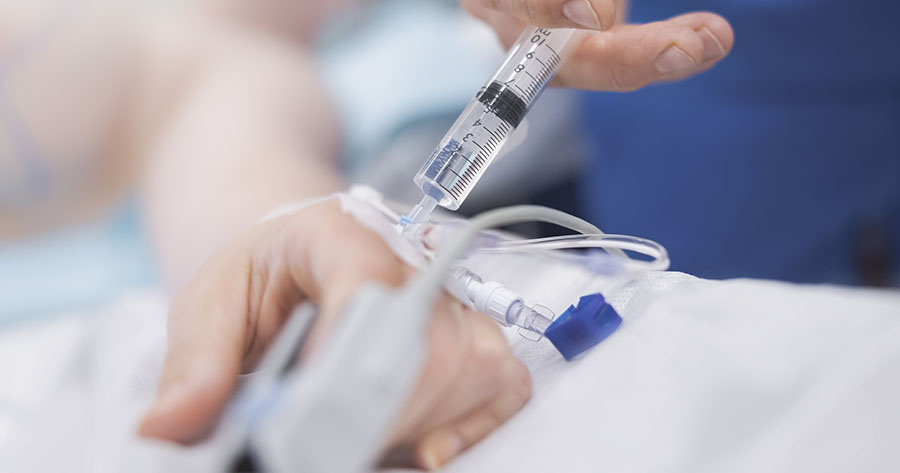We know that the incidence of type 1 diabetes is increasing. In Finland, there has been a dramatic increase in the incidence of type 1 diabetes from 31.4 per 100 000 per year in 1980, to 64.2 per 100 000 per year in 2005 (Harjutsalo et al, 2008). Interpretation of these data had led to the prediction that the number of new cases diagnosed at or before 14 years of age will double in the next 15 years.
The management of diabetes in children and young people is often challenging. This has been attributed, in part, to fear of hypoglycaemia, difficulty in delivering small, accurate amounts of insulin, and overcoming the barriers of providing effective care in schools and early-years environments. As a consequence, outcomes in the UK remain poor. In 2005–6, only 16.6% of children and young people achieved the recommended HbA1c of ≤7.5% (National Diabetes Audit, 2007). Currently, 29.5% of children and young people continue to have an HbA1c >9.5% (National Diabetes Audit, 2008).
Continuous subcutaneous insulin infusion (CSII), or insulin pump, therapy provides significant improvement in glycaemic control and quality of life for some people with type 1 diabetes (Department of Health, 2007). A review and re-appraisal of the use of CSII therapy for the treatment of diabetes (NICE, 2008) resulted in changes to the guidance, which have important implications for paediatric services. These are outlined below.
CSII in children under 12 years of age
The new guidance recognises that managing the delivery of very small doses of insulin to young children, and delivering midday doses of insulin to young school children, can be difficult, impractical, or both (NICE, 2008). This has led to a change in the guidance specifically for young children, namely that CSII therapy must now be recommended as a treatment option for children younger than 12 years of age with type 1 diabetes, provided that multiple daily injection therapy (MDI) is considered impractical or inappropriate.
CSII in children aged 12 or older
CSII therapy is recommended for children aged 12 years or older, provided that either:
- Attempts to achieve target HbA1c levels with MDI therapy results in disabling hypoglycaemia (defined as the repeated and unpredictable occurrence of hypoglycaemia that results in persistent anxiety about recurrence and is associated with a significant adverse effect on quality of life); or
- HbA1c levels remain high (≥ 8.5%) on MDI therapy (including the use of long-acting insulin analogues) despite a high level of care.
When should CSII therapy be stopped?
The updated guidance recommends that following initiation, CSII therapy should be continued only if it results in either a sustained improvement in glycaemic control (evidenced by a fall in HbA1c) or a sustained decrease in the rate of hypoglycaemic episodes. Such goals should be set on an individual basis by the responsible diabetes team, in discussion with the young person and his or her carers.
The NICE Appraisal Committee agreed that before withdrawing CSII therapy there should be further efforts at providing support and care for the user, including further structured education where necessary.
There is also a caveat in the guidance relating to children under 12 years of age. For those who have not been on MDI therapy before initiating insulin pump therapy, there is an expectation that some time between the ages of 12 and 18 years these young people will undergo a trial of MDI. The committee considered that the continuation of CSII therapy could not be equitably supported without a trial of MDI therapy after reaching this age. How this might be carried out in practice remains unclear.
How will the new guidance impact on numbers?
The number of people using CSII therapy in the UK has risen, but remains low relative to other Western countries. Around 1–2% of people with type 1 diabetes in the UK use insulin pumps, compared with 10–15% in Germany and the Netherlands and 20% in the USA (Kerr et al, 2007). Specifically in paediatrics, perhaps only 0.1% of children in the UK with type 1 diabetes currently use an insulin pump (Department of Health, 2007).
Implementation of the new guidance could significantly increase the number of children and young people eligible for consideration of insulin pump therapy. Under the new criteria, it may become clinically indicated for 10–50% of children under 12 years of age with type 1 diabetes, and for 8–15% of people aged 12 years or more (Campbell, 2008).
Additionally, recent evidence indicates that more than 80% of children with type 1 diabetes maintained CSII therapy for at least 4 years following initiation (Wood et al, 2006). This will inevitably have a cumulative effect and increase the proportion of insulin pump users over time.
What are the costs of implementing the new guidance?
CSII is associated with an additional cost per person per annum compared with MDI therapy (NICE, 2008). Importantly, the NHS should have made resources and funds available for implementation of the guidance within 3 months of its publication date.
Currently, insulin pumps and the related consumables (batteries, reservoirs, infusion sets) are specialised service exclusions under payment by results (PbR). They can be paid for outside the tariff, subject to advance agreement by both the providers and commissioners. PbR in 2007–8 makes it clear that commissioners and providers should agree local prices for insulin pumps and consumables, and put in place local arrangements for monitoring activity.
What about continuous glucose monitoring (CGM) systems?
Some insulin pumps have the capacity to measure continuous interstitial glucose levels via subcutaneous glucose sensors. The measured data are transmitted wirelessly to the pump from the glucose sensor, where they can be monitored and stored. Guidance on CGM systems is excluded from this appraisal, although NICE has previously recommended that CGM be offered to children and young people who have persistent problems with impaired awareness of hypoglycaemia or repeated hypo- and hyperglycaemia (NICE, 2004).
Recent research has shown that people over 25 years of age who use CGM experienced improved diabetes management, with an average decrease in HbA1c of 0.53% (JDRF CGM Study Group, 2008). The Study Group found no significant difference in HbA1c between children who did and did not use CGM, but hypothesised that this may be due to the former not using the device consistently throughout the week. More evidence relating to either the cost-effectiveness or the clinical benefit of using CGM is needed.
Who should be delivering an insulin pump service?
It is important that children, young people and their carers have the confidence and commitment to use insulin pump therapy effectively. Their diabetes teams are integral to this, particularly in the first few months after insulin pump initiation when pump users and their carers are developing expertise.
NICE, therefore, recommends that CSII therapy be initiated by a trained specialist team. The exact composition of the team is up to the individual centre, but the expectation is that the team will comprise a physician with a specialist interest in insulin pump therapy, a diabetes specialist nurse, and a dietitian. Specialist teams should also provide structured education programmes and advice on diet, lifestyle and exercise appropriate for people using CSII therapy.
The future
The uneven provision of insulin pump services across the country has resulted in many children waiting months for referral to a specialist service for insulin pump initiation. This could involve long journeys to the clinic, with unclear protocols for accessing ongoing support and the potential for disjointed diabetes care.
The new guidance could lead to a significant increase in pump usage, and force a change in practice as the current paediatric specialist insulin pump centres will be inadequate to deal with the increased demand. In the author’s view, it would be wrong to develop an insulin pump service that has inadequate specialist nursing support, no provision of patient education and little access to dietetic advice. However, it is argued that the key issue is not the insulin pump, but the development of a single cohesive service whether people with diabetes are using CSII therapy or not (DH, 2007).
The revised NICE guidance has provided paediatric diabetes teams with a real opportunity to offer more children and young people the chance to use insulin pump therapy. The challenge is for local diabetes teams and commissioners to integrate CSII services into a suitably resourced diabetes infrastructure.





The risk factors and what might be done to address them.
24 Mar 2025